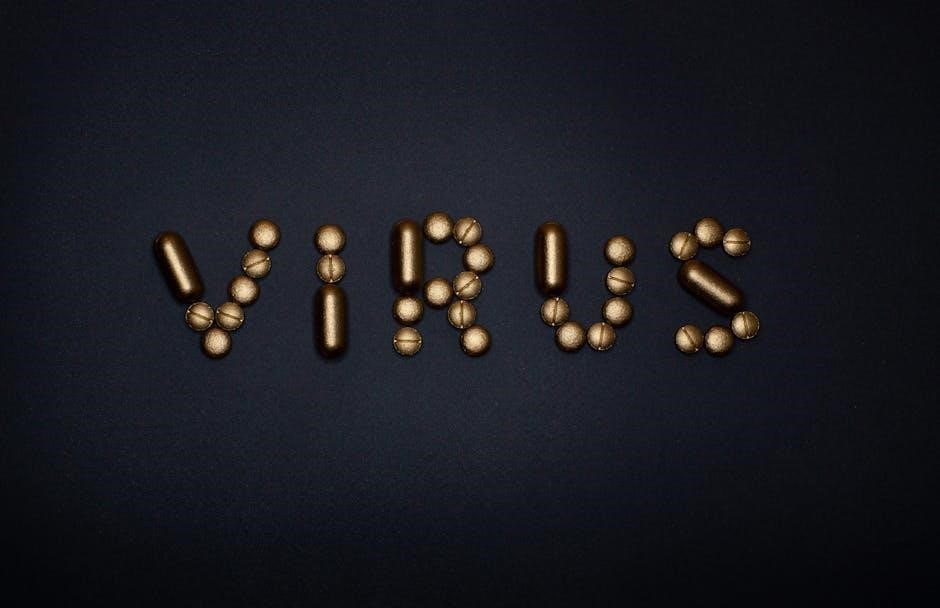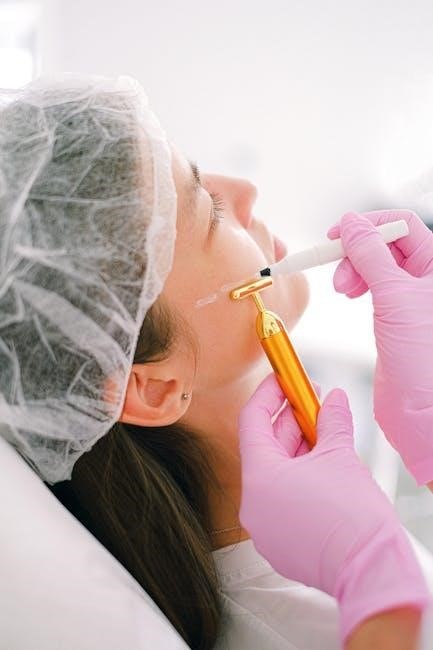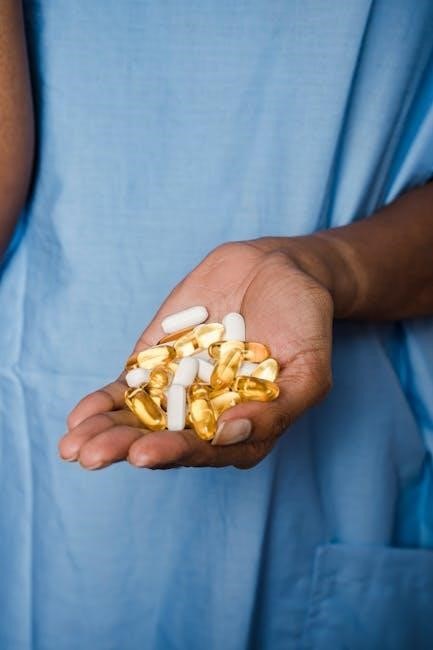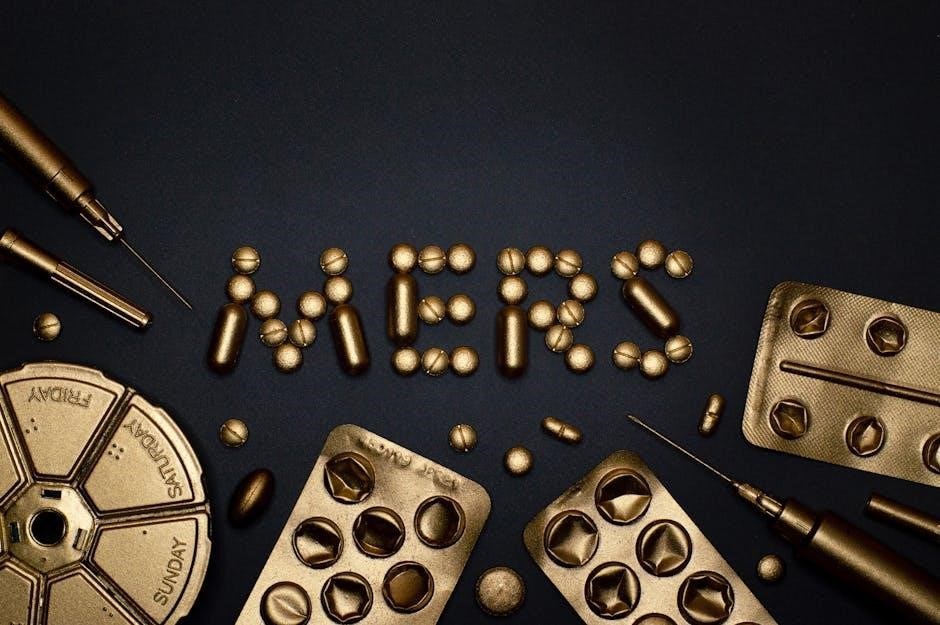Ichthyosis is a genetic skin disorder affecting Golden Retrievers, causing excessive scaling and discomfort. It stems from keratinization defects and is managed with symptomatic treatments, as no cure exists.
1.1 Understanding the Condition and Its Prevalence
Ichthyosis in Golden Retrievers is a hereditary skin disorder characterized by excessive scaling and thickening of the skin due to abnormal keratinization. It is caused by a mutation in the PNPLA1 gene, leading to defective lipid metabolism. The condition is relatively rare, affecting approximately 1 in 100 Golden Retrievers. While it is not life-threatening, it significantly impacts the dog’s comfort and appearance. Understanding its genetic basis is crucial for managing the condition and making informed breeding decisions. Prevalence studies highlight the importance of genetic testing to identify carriers and reduce the incidence in offspring, ensuring healthier generations of Golden Retrievers.
Clinical Signs and Symptoms of Ichthyosis in Golden Retrievers
Ichthyosis causes excessive scaling, thickened skin, and dryness, often leading to secondary infections. Affected dogs may exhibit flaky skin, discomfort, and a diminished quality of life.
2.1 Skin Lesions and Scaling
Ichthyosis in Golden Retrievers primarily manifests as excessive skin scaling, with thick, flaky lesions often covering large areas of the body. These lesions can appear dry and brittle, leading to discomfort. The scaling is most prominent on the abdomen, legs, and ears, and may worsen with age. Skin biopsies reveal hyperkeratosis, a condition characterized by excessive keratin production. Affected dogs often exhibit redness and inflammation around the lesions, which can progress to secondary infections if left untreated. Regular grooming and specific shampoos, such as those containing sebolytics, are often recommended to manage the scaling and improve skin health.
2.2 Impact on Quality of Life
Ichthyosis significantly impacts the quality of life for Golden Retrievers, causing discomfort, pain, and mobility issues due to thick skin lesions. Affected dogs may struggle with physical activity, as scaling and inflammation can limit movement. Secondary infections and a compromised skin barrier further exacerbate distress. The emotional well-being of the dog is also affected, as persistent discomfort can lead to anxiety or lethargy. Regular veterinary care and ongoing management are essential to mitigate these effects, ensuring the dog maintains a reasonable quality of life despite the condition. Owners often report challenges in managing their dog’s discomfort, highlighting the need for a comprehensive care plan.

Diagnostic Approaches for Ichthyosis
Diagnosis involves skin biopsies and histopathology to confirm keratinization abnormalities. Genetic testing identifies mutations, aiding in definitive diagnosis and guiding breeding strategies to reduce incidence.
3;1 Skin Biopsy and Histopathology

A skin biopsy is a critical diagnostic tool for ichthyosis in Golden Retrievers. This procedure involves removing a small skin sample, which is then examined under a microscope. Histopathology reveals characteristic abnormalities such as hyperkeratosis, the thickening of the outer skin layer, and parakeratosis, the presence of nuclei in the stratum corneum. These findings are essential for confirming the disorder, as they directly reflect the keratinization defects associated with ichthyosis. The biopsy results provide a definitive diagnosis, helping veterinarians develop appropriate treatment plans tailored to the dog’s specific condition.
3.2 Genetic Testing for Ichthyosis
Genetic testing is a reliable method to identify the mutation responsible for ichthyosis in Golden Retrievers. This disorder is inherited as an autosomal recessive trait, meaning affected dogs must inherit two copies of the defective gene. Genetic testing involves analyzing DNA to confirm the presence of the mutation. It is particularly useful for identifying carriers, which are crucial for breeding programs aimed at reducing the incidence of the condition. By testing breeding stock, responsible breeders can make informed decisions to minimize passing on the mutation. This approach complements clinical diagnostics and helps in managing the genetic aspects of ichthyosis effectively.

Treatment Options for Ichthyosis in Golden Retrievers
Treatment focuses on symptom relief, including topical therapies, oral medications, and alternative approaches to manage scaling and improve skin health in affected Golden Retrievers.
4.1 Topical Therapies: Shampoos and Moisturizers
Topical therapies are a cornerstone of managing ichthyosis in Golden Retrievers. Shampoos containing ingredients like selenium sulfide or coal tar help reduce scaling and improve skin hygiene. Moisturizers are essential to hydrate the skin and restore its barrier function. Products with alpha-hydroxy acids, such as gluconolactone, are often recommended for their gentle exfoliating and hydrating properties. Regular use of these topical treatments can significantly improve the dog’s comfort and reduce the appearance of scales. A study highlighted the efficacy of a gluconolactone-based shampoo in managing the condition. Consistency in application, as directed by a veterinarian, is key to achieving optimal results and enhancing the dog’s quality of life;

4.2 Systemic Treatments: Oral Medications
Systemic treatments, such as oral medications, are sometimes prescribed for severe cases of ichthyosis in Golden Retrievers. Isotretinoin, a derivative of vitamin A, is commonly used to reduce excessive skin cell turnover. This oral retinoid helps minimize scaling and improves skin health. However, its use requires strict veterinary supervision due to potential side effects. Oral medications are typically reserved for dogs with significant discomfort or widespread skin involvement. While these treatments can provide relief, they do not cure the condition, and long-term management is often necessary to maintain skin health and comfort for the affected dog.
4.3 Alternative Approaches: Alpha-Hydroxy Acids and More
Alternative treatments for ichthyosis in Golden Retrievers include the use of alpha-hydroxy acids (AHAs), such as gluconolactone, which help soften and remove scales. These agents are often applied topically to improve skin hydration and reduce flakiness. Additionally, some studies suggest that omega-3 fatty acids may support skin health by reducing inflammation. While not a cure, these approaches can complement traditional therapies like shampoos and moisturizers. Regular application and veterinary guidance are essential for optimal results. These alternative methods aim to enhance comfort and skin appearance without the side effects associated with systemic medications, offering a more natural approach to managing the condition.
Management and Care Strategies

Regular grooming and dietary adjustments are crucial for managing ichthyosis in Golden Retrievers, focusing on improving skin health and reducing symptoms through consistent care and proper nutrition.
5.1 Importance of Regular Grooming
Regular grooming is essential for managing ichthyosis in Golden Retrievers. It helps remove scales, reduce skin irritation, and improve overall skin health. Bathing with specific shampoos and moisturizers can alleviate symptoms, while consistent brushing prevents matting and promotes comfort. Grooming also allows early detection of skin changes, enabling timely interventions. Consistency is key to maintaining the dog’s quality of life and preventing complications. Consulting a veterinarian for tailored grooming routines is highly recommended to ensure effectiveness and safety for the dog.

5.2 Dietary Adjustments for Skin Health
Dietary adjustments play a crucial role in managing ichthyosis in Golden Retrievers. A balanced diet rich in omega-3 fatty acids, vitamins, and antioxidants can help reduce skin inflammation and promote healing. Foods containing essential fatty acids, such as fish oil, can improve skin barrier function and reduce scaling. Avoiding allergens and ensuring proper nutrient absorption are also important. While diet alone cannot cure ichthyosis, it supports overall skin health and complements other treatments. Consulting a veterinarian to tailor dietary plans for individual needs is recommended to maximize benefits and improve the dog’s quality of life.

Breeding Considerations and Genetic Counseling

Genetic counseling is essential in breeding Golden Retrievers to minimize ichthyosis incidence. Breeders should prioritize testing and selecting dogs with clear genetic profiles to reduce the condition’s prevalence.
6.1 Reducing the Incidence in Offspring
Reducing the incidence of ichthyosis in Golden Retriever offspring requires careful breeding practices and genetic testing. Breeders should prioritize mating affected dogs with clear, non-carrier partners to minimize the risk of passing on the mutation. Genetic testing is crucial for identifying carriers and affected individuals, ensuring informed breeding decisions. By selectively breeding dogs with clear genetic profiles, the prevalence of ichthyosis can be significantly reduced. Additionally, collaborating with veterinary geneticists and following breeding guidelines helps promote healthier offspring. Responsible breeding practices not only preserve the breed’s health but also improve the quality of life for future generations of Golden Retrievers.
6.2 Role of Breeders in Managing the Condition
Breeders play a vital role in managing ichthyosis by implementing responsible breeding practices. They should prioritize genetic testing to identify carriers and affected dogs, ensuring they are not bred together. Transparency with potential buyers about a dog’s genetic status is essential. Breeders must educate themselves and others about the condition to reduce its prevalence. Collaborating with veterinarians and geneticists helps make informed decisions. By adhering to breeding guidelines and avoiding pairing affected or carrier dogs, breeders can significantly reduce the incidence of ichthyosis. Their efforts are crucial in preserving the health and well-being of the Golden Retriever breed.

